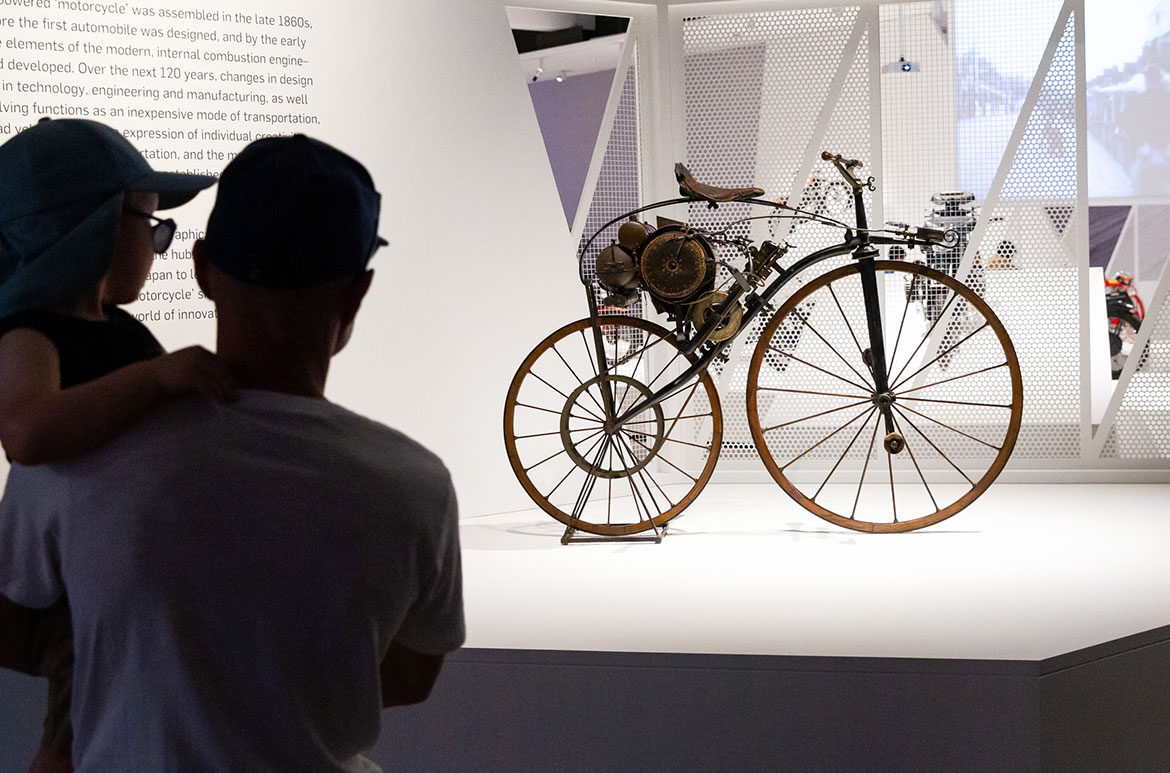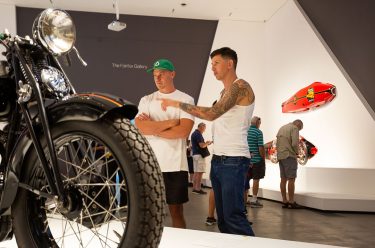Motorcycling’s celebrated history of technical and design advancement had modest beginnings in the Age of Steam. In 1868, Parisian inventor and engineer Louis-Guillaume Perreaux (1816–89) patented a steam engine small enough to be used in a motorcycle, and within a few years had fixed it to a frame modelled on the pedal-powered bicycle. Perreaux’s experiments, and those of a few other early innovators, marked both the beginning and end of the era of steam-driven motorcycles. Their inventions nonetheless sparked a thirst for two-wheeled transportation that led to further experimentation, and in 1894 the first commercial motorcycles went into production.
The industry developed rapidly from there: in 1895 Count Jules-Albert de Dion (1856–1946) and Georges Bouton (1847–1938) produced a compact internal combustion engine in Paris and, a year later, were designing and selling tricycle frames fitted with an improved version of the engine. This configuration was so successful that it was adopted by a number of French, English and American manufacturers, including Cleveland in the United States.
Growing enthusiasm for the motorcycle as an economical means of transport led to other innovations, including petroleum–powered; spring-fork suspension; duplex cradle frame; six-speed transmission; automatic lubrication system; among others. Recently, visionary inventors recognised the benefits of electricity over gasoline with the introduction of battery–powered engines that has changed the fundamentals of motorcycle design.
Showcasing 100 spectacular motorcycles, and more, ‘The Motorcycle: Design, Art, Desire’ spans the history of this dynamic and versatile vehicle, from its humble origins as an engine bolted to a bicycle to the cutting-edge electric prototypes of the twenty-first century, these motorcycles trace this history of innovation, and have been carefully selected for the technical achievements and aesthetic merits they represent.
‘The Motorcycle’ exhibition was in Brisbane’s Gallery of Modern Art (GOMA) from 28 November 2020 until 26 April 2021.
DELVE DEEPER: Browse the FULL LIST OF MOTORCYCLES
RELATED: Read more about THE BIKES ON DISPLAY
1 Perreaux Steam Velocipede 1871


The steam velocipede, designed by Frenchman Louis–Guillaume Perreaux, is one of the first motorcycles ever made, with different sources citing the date of its creation between 1867 and 1871. This incredible feat of mechanical ingenuity is a modified ‘boneshaker’ Michaux bicycle powered by a steam engine. With wooden wheels, flimsy handlebars and a high seat perched precariously above the boiling steam engine, the Perreaux would have been an uncomfortable, yet revolutionary, mode of travelling Paris’s streets.
Specifications
Country: France
Power: 2 hp
Engine: 30 cc steam at 3.5 kg/cm² (50 psi)
Designer: Louis-Guillaume Perreaux
Production: Prototype
Interesting facts
- Many credit the Perreaux as the world’s first motorcycle, while others recognise the Roper steam velocipede created by American Sylvester H. Roper, created at around the same time.
- While the Michaux bicycle that the Perreaux was based on had a brake on its front wheel, the Perreaux had none.
- The Perreaux on display is the only example of this pioneering motorcycle ever manufactured.
2 Cleveland Tricycle 1898
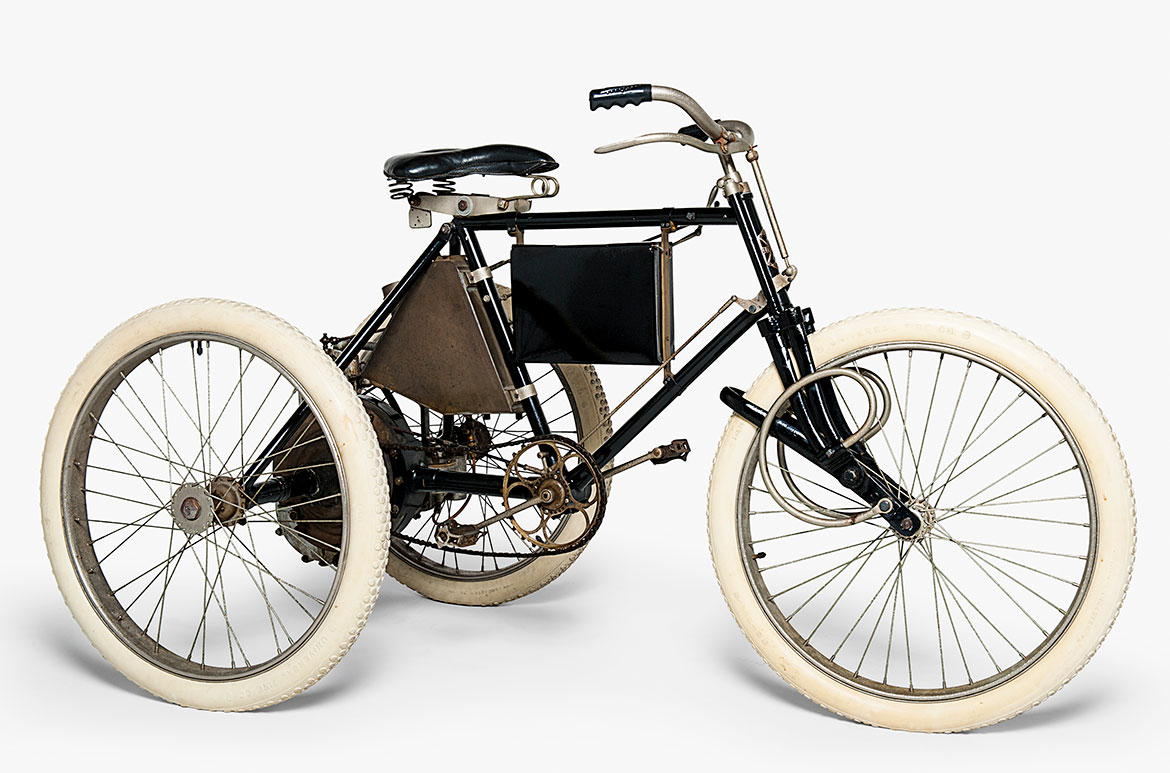

This 1898 motor–tricycle is thought to be the earliest example of a motorcycle with spring-fork suspension. Very similar in appearance to a child’s tricycle, only larger in size, motor–tricycles such as this were marketed as a safer alternative to the motor–bicycle, due to the increased stability offered by the third wheel.
Specifications
Country: USA
Power: 3.5 hp
Engine: 376 cc four-stroke single
Production: 1898–1901
Interesting facts
- By the late 1800s the peddle–powered tricycle had become the vehicle of choice for those unable to ride the high–wheeled bicycles of the time, especially women who were limited by the long dresses they wore.
- The first motor–tricycles, developed in the 1880s, were driven by steam, and by 1891 reports of the first petroleum–driven motor-tricycle appeared in Australian newspapers.
- The first petroleum–powered motor–tricycle arrived in Australia in March 1898.
- De Dion-Bouton tricycles were born in 1895 and remained a popular choice of vehicle across Europe until 1901.
3 ABC 1919

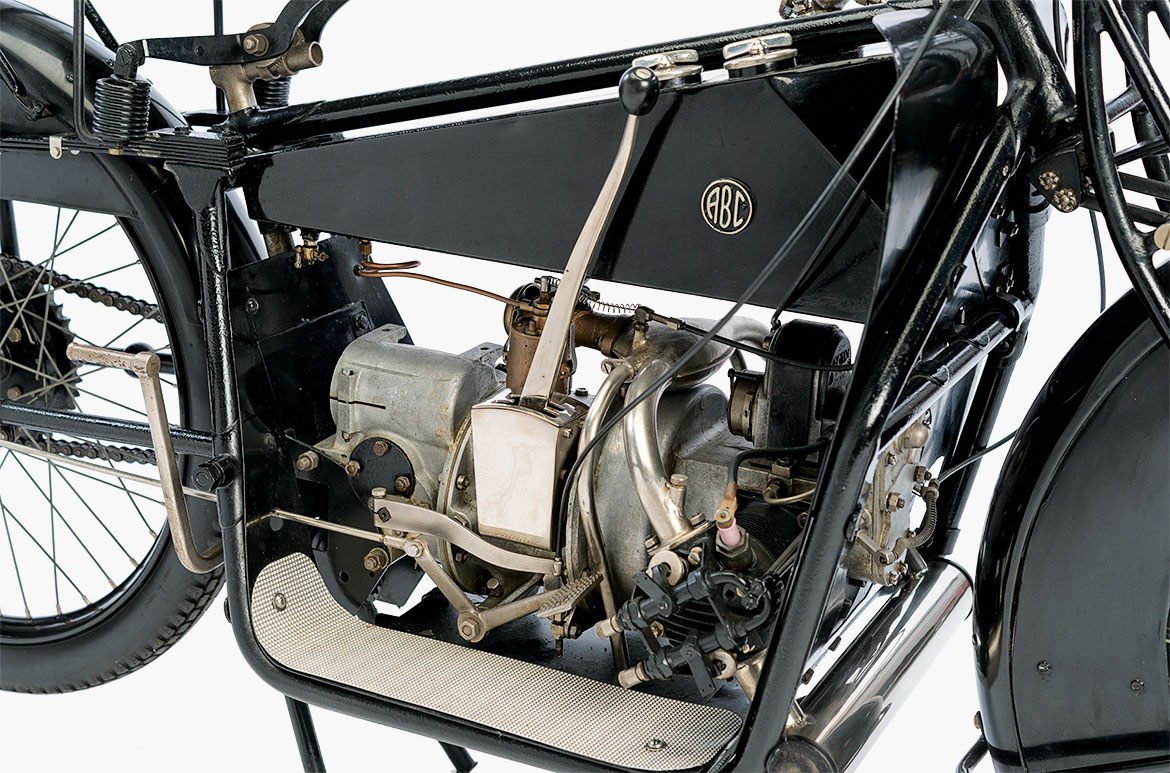
The 1919 ABC was a British bike marketed as an innovative gentleman’s touring motorcycle. Reputedly designed in only three weeks, the motorcycle caused a sensation on its debut at the 1919 Motorcycle Show. The ABC offered riders a comfortable jaunt, with an enclosed flywheel, car-type gear change lever and both front and rear suspension, similar to that used in luxury automobiles at the time. Despite its small engine capacity, the ABC promised good performance. Between 1919 and 1925, 2200 ABCs were produced in the United Kingdom, and a further 3000 with an improved 493 cc engine in France, produced by Gnome et Rhône under licence.
Specifications
Country: United Kingdom
Power: 8 hp
Engine: 398 cc OHV boxer twin
Designer: Granville Bradshaw
Production: 1919–21
Interesting facts
- One of the first motorcycles ever made with a duplex cradle frame — two parallel frames that hold the engine between them — instead of a single frame, as seen on a bicycle.
- BMW’s first motorcycle, the 1923 R32, looked remarkably like the earlier 1919 ABC with its horizontally opposed two-cylinder engine — so much so that ABC challenged BMW’s use of the patented designs in 1926.
4 Suzuki T20 250 Hustler 1966
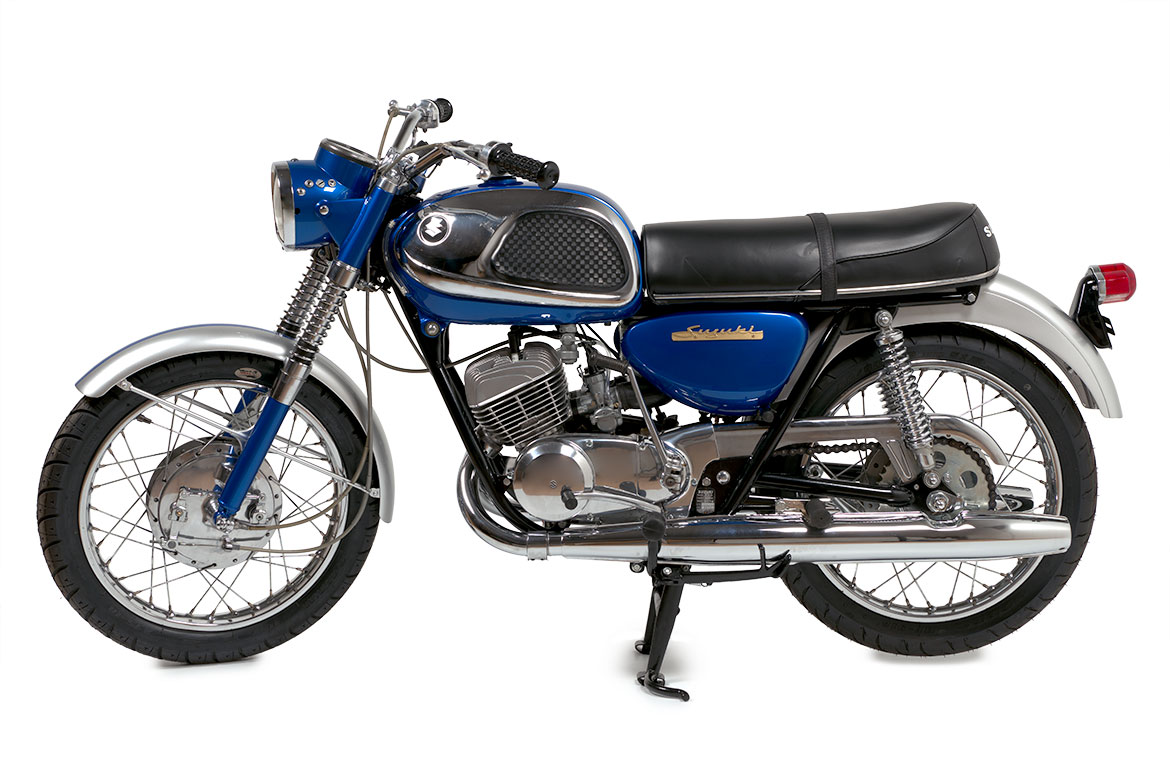
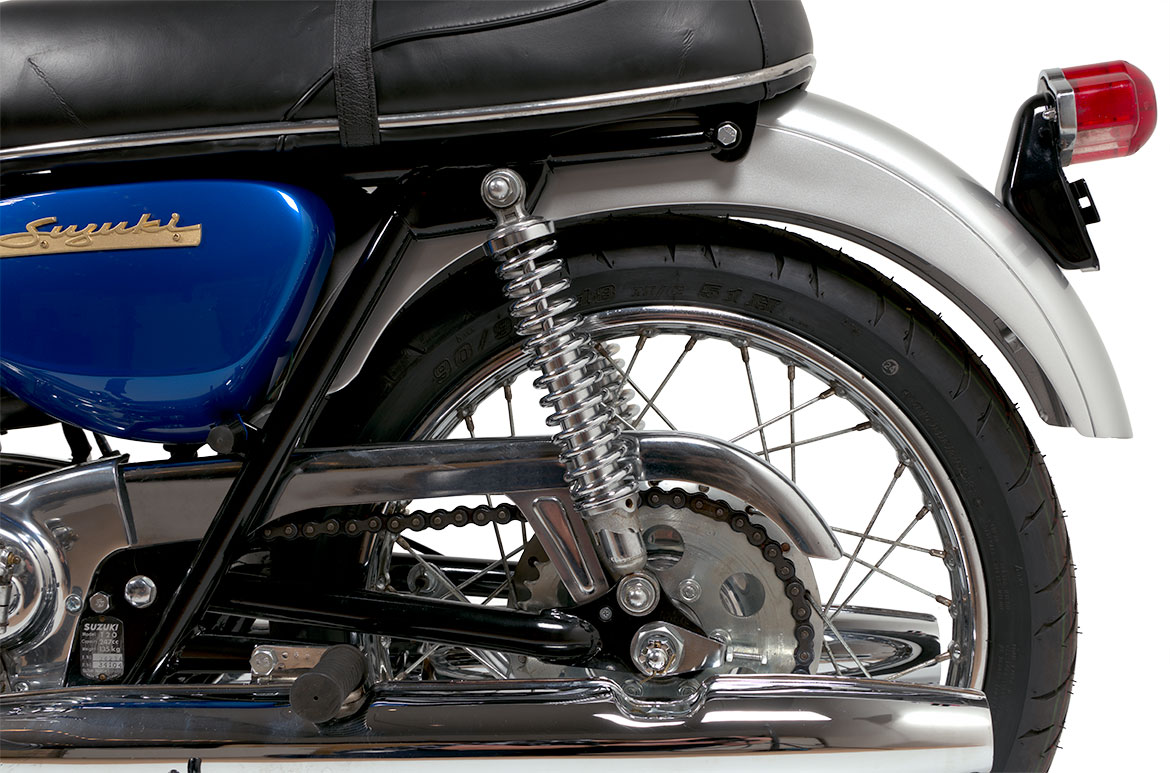
The T20 is a lightweight, high-performance 250 cc motorcycle capable of exceeding 140 km/h. It was the first motorcycle in the world at the time to feature a six-speed transmission, advertised with the slogan, ‘When the rest run out of stick, shift into sixth’. The Hustler’s sales brochure also touted that the bike was able to ‘accelerate like there’s a cyclone in the tank!’
One innovative feature of the T20 is its Posi–Force automatic lubrication system, which directly pumped oil into the petrol tank. Prior to this, many riders had to manually mix oil into their tanks.
Specifications
Country: Japan
Power: 29 hp
Engine: Two-stroke parallel twin
Designer: Suzuki Motor Company
Production: 1965–68
Interesting facts
- In Japan, the T20 was called the Super Sport; early models in the United Kingdon were named the Super Six; and in the USA it was labelled the X6 Hustler.
- Suzuki has a reputation for creating high-performance and reliable machines. At the time of its release, the Hustler was the fastest 250 cc motorcycle in the world and went straight to the top of its racing class. Many top riders in Australia launched their careers on this bike.
- 35 000 T20s were sold internationally over the course of three years, and it is now becoming a highly collectable classic Japanese motorcycle.
5 Britten V1000 1994
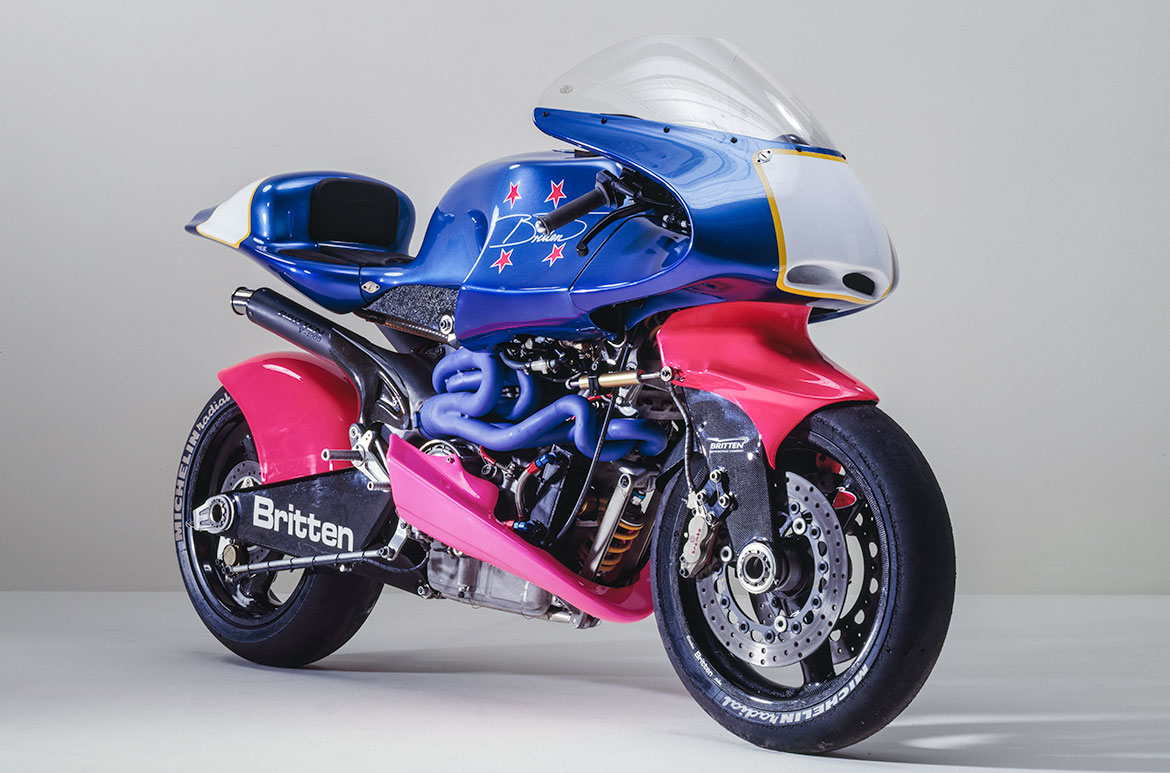

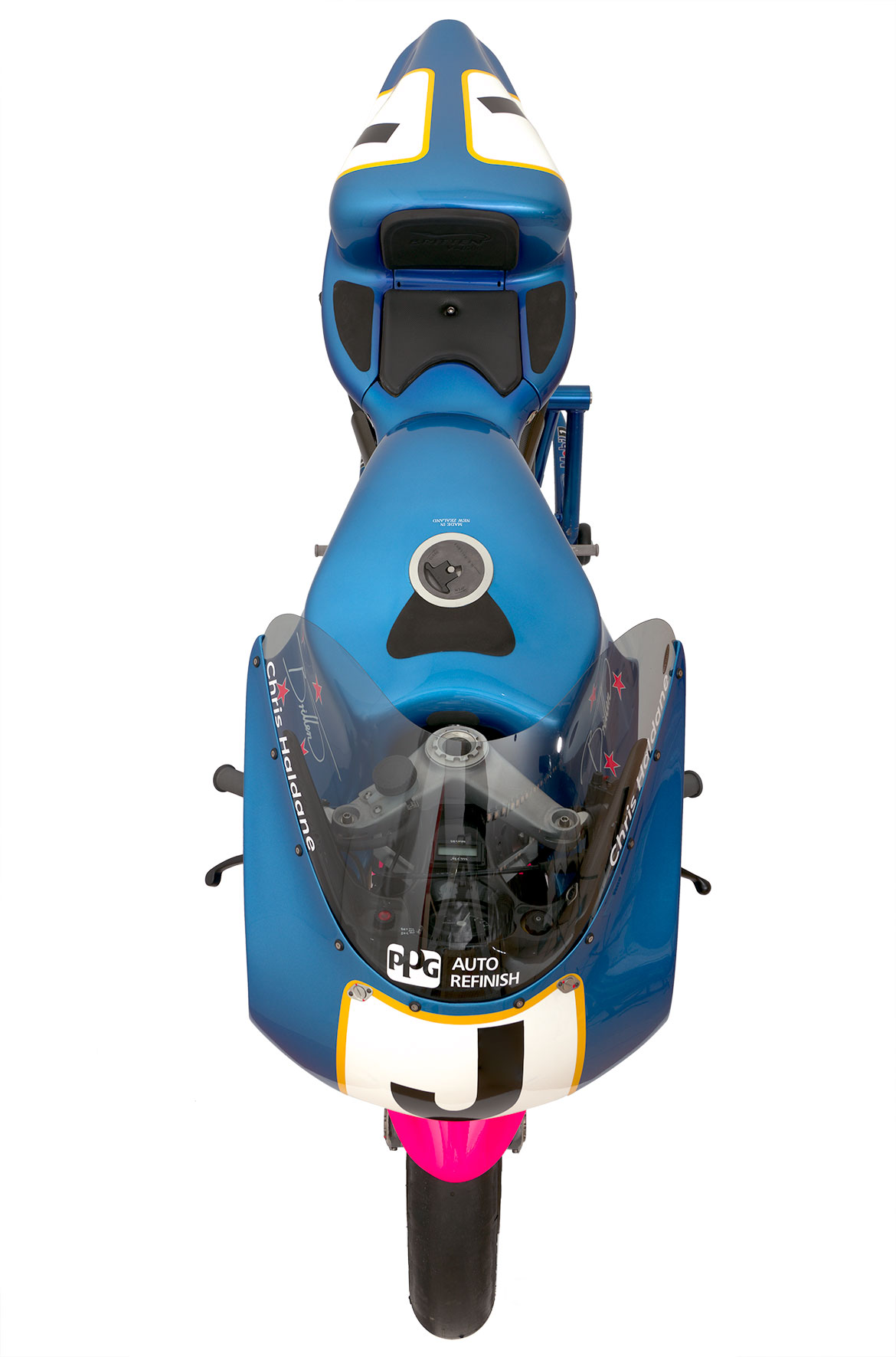
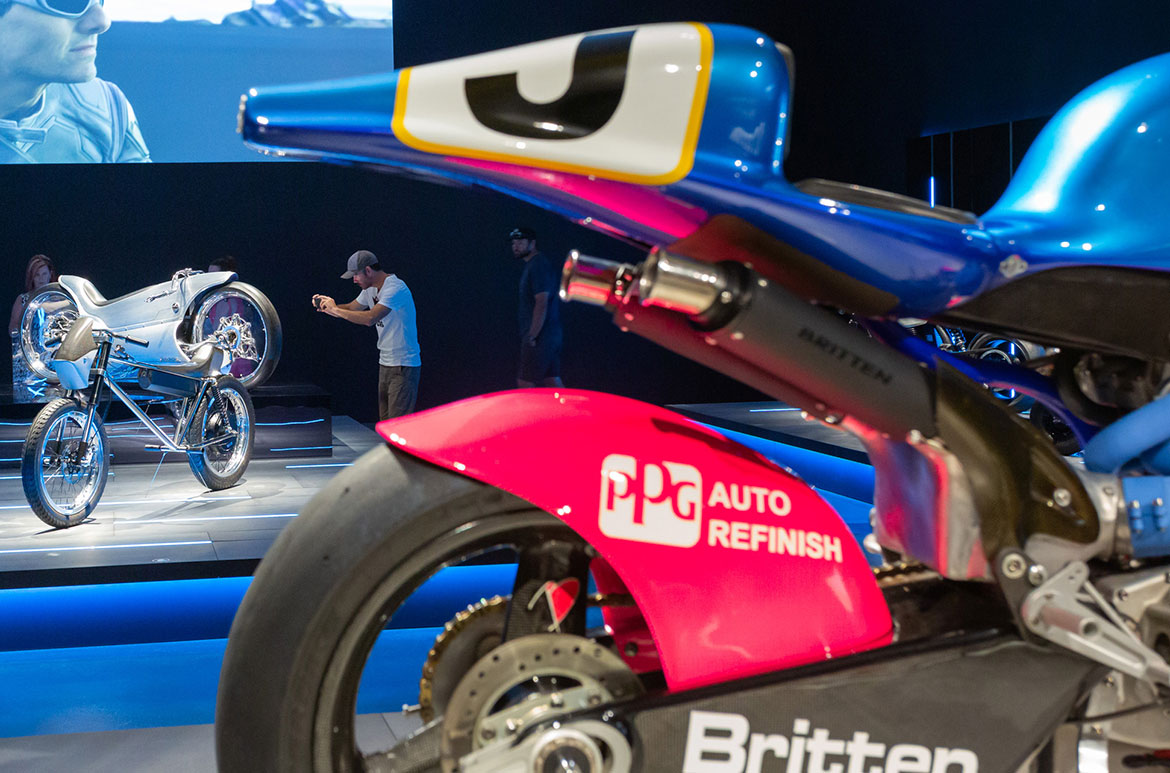
Created by design engineer John Britten, this may well be the greatest motorcycle ever made. The Britten V1000 was conceived, designed and built to be raced arrow-fast, and displays superb design features, such as the lipstick-pink-and-powder-blue colour scheme, unheard of in the world of motorcycles. Its lines flow effortlessly from the tip of its dragon’s nose, through the intestinal twists of its twin exhaust pipes to the end of its cantilevered tail. The front cowling, almost a mudguard, tightly hugs the front wheel and forks; the second cowling smooths the airflow past the engine; and the third hugs the rear wheel — all creating downforce as they do so.
Specifications
Country: New Zealand
Power: 165 hp
Engine: 999 cc DOHC 60° V-twin
Designer: John Britten
Production: 1991–98
Interesting facts
- The V1000 was designed solely for racing, and was too elaborate and specific to racing to produce in large numbers as a production bike.
- Only ten were ever built, in addition to one prototype, all custom–built entirely by hand in a shed in Christchurch, New Zealand.
- The Britten V1000 caused a real stir among the racing bike community when it first appeared on international racetracks in 1990 in its now iconic fluoro pink and blue livery.
- The Britten V1000 holds four official world speed records, all gained in 1993. It is universally recognised as a milestone in racing–motorcycle design and made a legend out of its creator John Britten.
Read more about Motorcycles / Subscribe to QAGOMA YouTube to go behind-the-scenes
Featured image: Perreaux Steam Velocipede 1871 installed in ‘The Motorcycle’ exhibition / Photograph: Brad Wagner © QAGOMA
Show off your ride with #MotorcycleGOMA #QAGOMA
